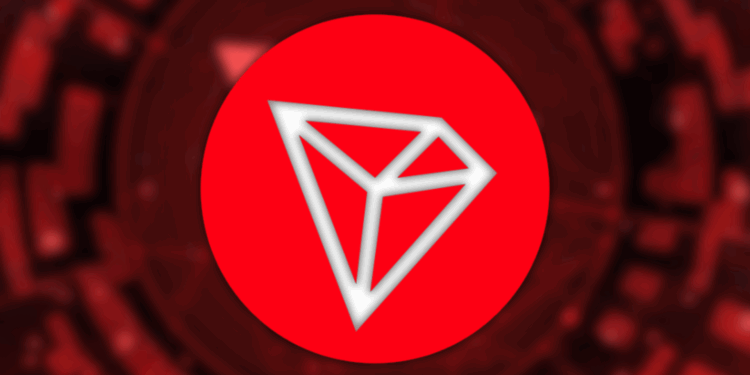- TRON is now one of the most active Layer-1s, powering billions in stablecoin volume with ultra-low fees and blazing speed.
- Its Ethereum-compatible architecture and developer-friendly tools make it a go-to chain for scalable, cost-efficient DeFi and dApps.
- With growing adoption, institutional backing, and bold expansion plans, TRON is positioning itself as crypto’s most pragmatic infrastructure choice for 2025.
TRON, the silent heavyweight of blockchain infrastructure, has spent the last year quietly accumulating power in all the places that matter. While other chains chase press releases and VC headlines, TRON has steadily embedded itself deep into the transactional plumbing of Web3, quietly facilitating billions in stablecoin transfers, DeFi liquidity, and cross-chain flows. But in 2025, that quiet presence has turned loud.
The project has surged back into the spotlight as a home for politically charged memecoins, opportunistic stablecoin launches, and an increasingly controversial DeFi ecosystem. It is capitalizing on market volatility and polarizing narratives — and it is working.
So, let us take a closer look at what TRON actually is, how it works, and why it has become the blockchain of choice for both financial opportunists and crypto’s most controversial projects.
What Is Tron?
At its core, TRON is a Layer-1 public blockchain designed for high-speed, high-volume decentralized applications. Launched in 2017 by Chinese entrepreneur Justin Sun, TRON began life as a content-sharing platform aiming to strip power from centralized internet giants like Google and Facebook. The mission was to give creators direct access to their audiences and monetize their work without intermediaries skimming profits off the top.
While the content platform angle has faded into the background, TRON has since evolved into a fully-fledged smart contract blockchain platform, hosting decentralized applications (dApps), decentralized finance (DeFi) services, NFT marketplaces, and high-frequency transaction protocols — all powered by its native cryptocurrency, TRX.
How Does it Work?
TRON’s architecture is engineered for speed and efficiency. At its core lies a Delegated Proof of Stake (DPoS) consensus mechanism, a variant of Proof of Stake designed to maximize throughput while maintaining network security. Every six hours, TRX holders vote to elect 27 “Super Representatives” — trusted nodes that validate transactions and produce new blocks. These representatives are tasked with adding a new block approximately every three seconds, allowing the network to process roughly 2,000 transactions per second (TPS).
This design sharply contrasts with legacy blockchains like Ethereum, where network congestion can send fees soaring into the double digits. On TRON, transaction fees are typically negligible — often less than a cent — making microtransactions and mass adoption viable.
In addition to this, the network’s architecture is split into three core layers:
- Storage Layer – This handles the distributed ledger and state data, optimized for scalability, redundancy, and rapid retrieval. It ensures that blockchain data is consistently available and resilient across the network.
- Core Layer – Responsible for executing the consensus mechanism (DPoS), managing accounts, and running smart contracts written in Solidity — the same programming language used on Ethereum, ensuring developers can easily migrate or build interoperable applications.
- Application Layer – This is where decentralized applications (dApps), wallets, APIs, and user interfaces operate, enabling developers and users to interact with the blockchain seamlessly.
The synergy of these layers, combined with DPoS, grants TRON its trademark combination of high-speed transaction finality, ultra-low fees, and full Ethereum Virtual Machine (EVM) compatibility. For developers looking to avoid the gas fee nightmares and congestion headaches plaguing other chains, TRON presents a compelling alternative without forcing compromises on functionality.
What Problems Does It Solve?
TRON addresses key blockchain issues like speed, cost, scalability, and accessibility to enable smoother decentralized experiences. This entails:
Skyrocketing Fees
TRON drastically lowers transaction costs, keeping fees typically under $0.01. This contrasts sharply with Ethereum and others, where gas fees can spike into the tens or even hundreds of dollars during network congestion, blocking small transactions and deterring users.
Transaction Speed
Processing around 2,000 transactions per second with block times of just three seconds. This speed allows dApps to run smoothly and handle large volumes without delays.
Scalability Challenges
TRON’s three-layered architecture ensures it can manage increasing demand without compromising performance or stability. The network is designed to grow sustainably, handling more users and more complex operations seamlessly, a critical hurdle for many blockchain projects.
Developer Accessibility
TRON supports Solidity and the Ethereum Virtual Machine, making it easy for developers to port existing Ethereum dApps. This compatibility eliminates the need to learn new languages or rebuild applications from scratch, speeding up development and fostering adoption.
Efficient Governance
Through Delegated Proof of Stake, TRON balances speed with decentralization by allowing token holders to elect 27 Super Representatives who validate transactions and maintain the network. This model reduces energy consumption and ensures network security with community involvement.
DeFi and Stablecoin Support
TRON integrates smoothly with stablecoins and DeFi protocols, facilitating real-world financial applications. This enables lending, borrowing, and liquidity provision in a cost-effective, user-friendly environment.
Key Milestones and Highlights
TRON’s steady rise is marked by strategic growth and expanding influence across multiple sectors of crypto. Some key highlights include:
Ecosystem Expansion
In 2024 and early 2025, TRON has solidified its position as a leading blockchain for stablecoins and DeFi. Billions in stablecoin transfers flow daily through TRON’s network, thanks to its low fees and fast speeds. The platform’s ability to handle mass liquidity without bottlenecks has attracted DeFi projects hungry for scalability and cost efficiency.
User Growth and Global Reach
TRON now hosts over 318 million accounts and has processed more than 10.8 billion transactions, with a total transfer volume nearing $19.6 trillion and over $23 billion in token value locked. Its adoption is accelerating across Asia, Africa, and the Middle East—regions increasingly embracing blockchain for financial inclusion and digital innovation.
Cross-Chain Bridges
TRON’s interoperability initiatives have connected its network to Ethereum, Binance Smart Chain, and other major blockchains. This facilitates cross-chain asset flows and expands TRON’s reach beyond its native ecosystem, making it a hub for multi-chain liquidity.
Institutional Interest
High-profile investors and institutions, such as Abu Dhabi’s MGX with a $2 billion investment, have shown growing confidence in TRON’s infrastructure and its stablecoin ecosystem. Such capital inflows underline TRON’s status as a serious contender in DeFi.
Partnerships and Ecosystem Support
TRON continues to onboard projects spanning NFT marketplaces, gaming dApps, and payment protocols, boosting its ecosystem diversity. Its compatibility with Ethereum tools and Solidity smart contracts accelerates developer onboarding and project launches.
The $TRUMP Token Migration
One of the most controversial moves came recently when the politically charged $TRUMP memecoin expanded to TRON’s network. This addition brought fresh trading pairs with USD1 stablecoin on Tron’s sun.io platform, highlighting the network’s growing appeal for memecoins and politically infused crypto projects. Despite the $TRUMP token’s price decline from its launch highs, its move to TRON has amplified attention on the network’s evolving DeFi landscape and its role in hosting divisive, high-profile tokens.
Roadmap and Plans Ahead
TRON’s development throughout 2024 and early 2025 has focused heavily on improving network stability, scalability, and the economic model supporting its ecosystem. Looking ahead, TRON aims to deepen USD1 stablecoin liquidity by integrating further into DeFi pools and targeting dominance in fast-growing markets like Asia and the MENA region. Expanding institutional-grade stablecoin use is a key step toward strengthening TRON’s financial infrastructure.
On the technical side, TRON plans to integrate Bitcoin Layer-2 solutions, enabling TRX and stablecoins to interact seamlessly with Bitcoin’s ecosystem, unlocking new liquidity channels. The network also intends to expand Tron Virtual Machine (TVM) capabilities by potentially supporting additional virtual machines, making it easier for developers to build diverse dApps and scale innovation.
Ultimately, by combining high throughput, ultra-low fees, and a flexible, developer-friendly platform, it is carving out a unique role as the operational engine behind fast-moving, high-stakes projects that need reliable infrastructure without compromise.
Final Thoughts
In conclusion, TRON in 2025 is bold and bloated with ambition, increasingly wrapped up in the spectacle of politics-meets-crypto. Yet beneath the noise, its infrastructure remains reliable, adoption steadily climbs, and the ecosystem hums with activity. This momentum fuels a roadmap focused on seizing volatile, high-yield markets few dares to enter. And all of this points to a recipe for TRON to thrive as crypto’s daring infrastructure choice.














